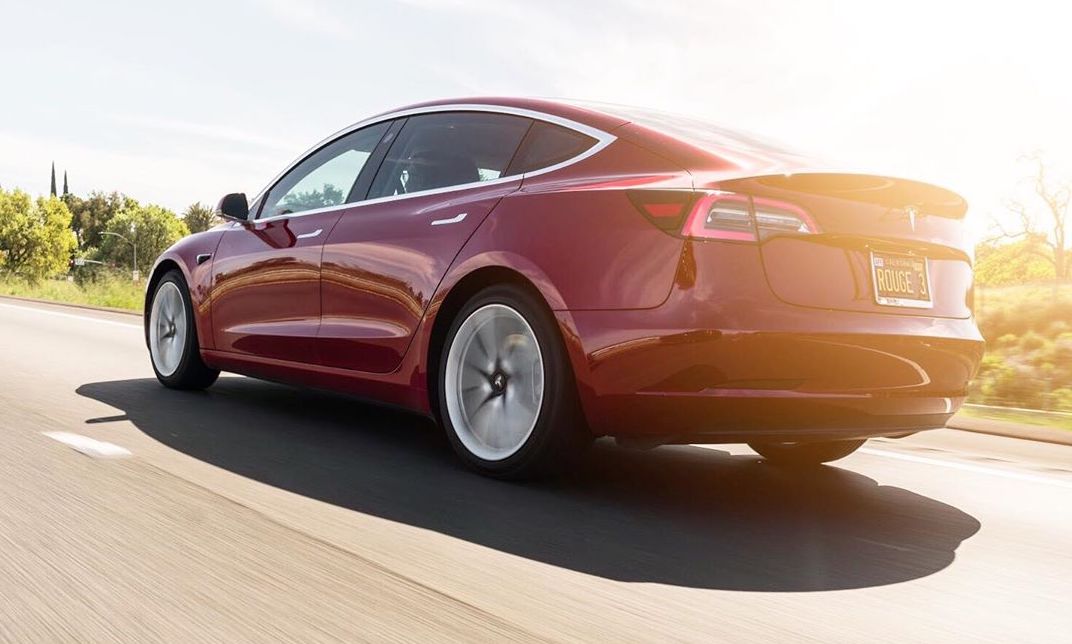
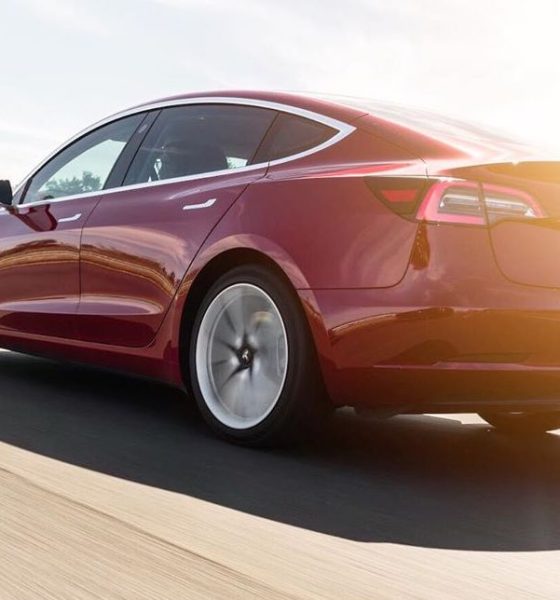
News
Tesla’s S3XY range updates show how ridiculously far legacy auto has fallen in the EV race
Anyone that has followed the Tesla story over the past few years would know that one of the primary talking points against the electric car maker is the impending competition that’s coming from more experienced, more competent carmakers. Critics argued that once legacy automakers get serious in their electric car efforts, a company as inexperienced as Tesla would easily be overwhelmed. This scenario has not happened at all — and if Tesla’s recent range updates to its S3XY lineup are anything to go by, it is becoming evident that legacy auto has fallen ridiculously behind in the electric car race.
Tesla’s recent range updates, which were rolled out together with the “refresh” of the Model 3, further cemented the company’s place at the top of the EV market. With the new updates, the Model 3 Long Range Dual Motor AWD was able to hit an EPA-estimated range of 353 miles per charge, and even its heftier, heavier sibling, the Model Y, was able to achieve a range of 326 miles. The Model X, an incredibly heavy tank of a vehicle, reached 371 miles per charge, and even the power-hungry Tesla Model S Performance is nearing 400 miles at 387 miles per charge.
It should be noted that Tesla was able to accomplish these improvements without any of the big updates that it announced during Battery Day. During the highly-anticipated event, Tesla revealed its batteries’ new 4680 form factor, which has 5x the volume of the Model 3 and Model Y’s 2170 cells. Tesla also announced a new vehicle manufacturing system that prioritizes single-piece casts and a structural battery pack. Other innovations, such as the use of high-nickel cathodes and silicon anodes, were discussed as well.
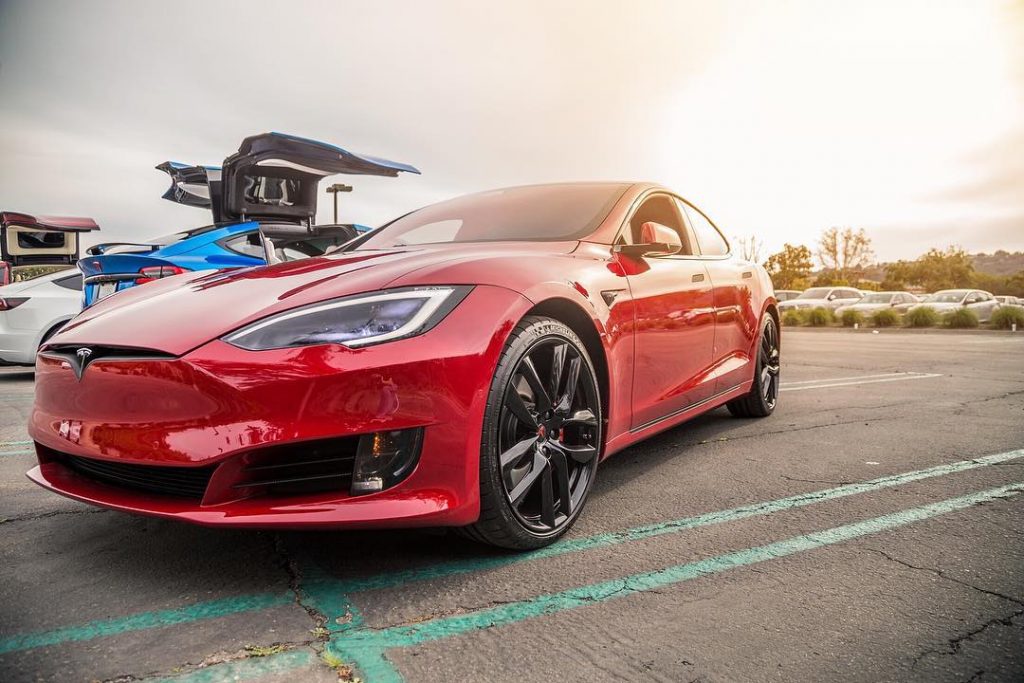
None of these innovations are in Tesla’s recently-updated vehicles.
Ultimately, Tesla’s recent updates highlight just how far the company has gone ahead of the pack in the electric vehicle sector. The fact that the electric car maker was able to achieve a 371-mile range for the Model X Long Range Dual Motor AWD with the same 100 kWh battery pack and the same 18650 cells as its Model X 100D predecessor is almost ridiculous. This is especially notable considering that the Audi e-tron, which has a battery pack that’s almost the same size as the Model X, has a range of 222 miles, and that’s the variant with the improved range already.
Tesla’s lead in range becomes even more significant when one considers the Model 3 and the Model Y, both of which utilize a battery pack that pretty much tops up at 75 kWh. A comparison of the two vehicles against the competition shows a stark contrast, with the Polestar 2, a car that’s largely considered as a legitimate rival to the Model 3, having an EPA-estimated range of 233 miles from a 78 kWh battery pack. The Jaguar I-PACE, a crossover that’s pretty close in size to the Model Y, follows the same pattern, having an EPA-estimated range of 246 miles per charge from a 90 kWh battery.
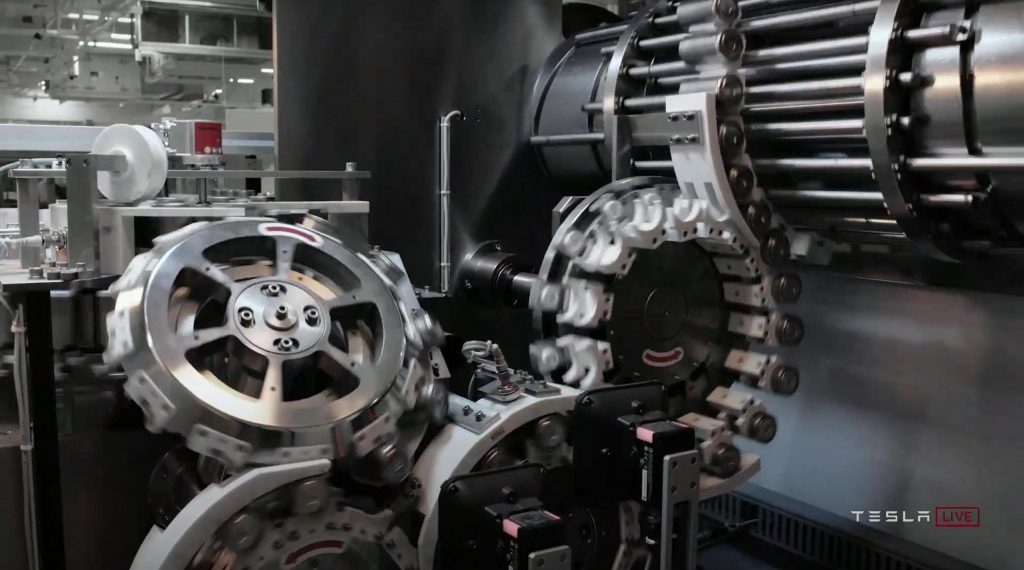
There are likely numerous reasons behind Tesla’s insane lead in the electric car sector today, but a good part of it likely has a lot to do with the company’s intense focus on battery tech and development. Tesla has been focused on improving and optimizing its batteries since Day 1, and as could be seen in the recent range updates of the S3XY lineup, this obsessive pursuit of optimization matters a lot. These efforts are not emulated at all with most legacy automakers, as veterans seem typically content with using off-the-shelf batteries from suppliers for their EV programs.
Yet perhaps the most uncomfortable reason behind legacy auto’s distance from Tesla’s vehicles today is something far simpler: hubris. While legacy automakers have been stating for years that they are serious about their future shift to electric cars, their actions have largely been far less tangible than their words. Today, it is almost as if Tesla’s competitors in the EV sector were far too comfortable just watching the electric car maker improve over the years. And now that Tesla has turned into a force that’s very difficult to ignore, they are scrambling to catch up.
Unfortunately, it is very difficult to catch a moving target. By the time legacy automakers can catch up to where Tesla is today, it is almost certain that the electric car maker will be even further ahead. This distance will likely be even farther, too, as Tesla’s next-generation battery technology is yet to enter the picture. Once Tesla’s 4680 cells are in production and its vehicles are being built with structural battery packs, the gap between the electric car maker and its competitors will most definitely be even more significant. And that, at least for legacy auto, is a scenario worthy of the final act of a tragedy.

News
Man credits Grok AI with saving his life after ER missed near-ruptured appendix
The AI flagged some of the man’s symptoms and urged him to return to the ER immediately and demand a CT scan.

A 49-year-old man has stated that xAI’s Grok ended up saving his life when the large language model identified a near-ruptured appendix that his first ER visit dismissed as acid reflux.
After being sent home from the ER, the man asked Grok to analyze his symptoms. The AI flagged some of the man’s symptoms and urged him to return immediately and demand a CT scan. The scan confirmed that something far worse than acid reflux was indeed going on.
Grok spotted what a doctor missed
In a post on Reddit, u/Tykjen noted that for 24 hours straight, he had a constant “razor-blade-level” abdominal pain that forced him into a fetal position. He had no fever or visible signs. He went to the ER, where a doctor pressed his soft belly, prescribed acid blockers, and sent him home.
The acid blockers didn’t work, and the man’s pain remained intense. He then decided to open a year-long chat he had with Grok and listed every detail that he was experiencing. The AI responded quickly. “Grok immediately flagged perforated ulcer or atypical appendicitis, told me the exact red-flag pattern I was describing, and basically said “go back right now and ask for a CT,” the man wrote in his post.
He copied Grok’s reasoning, returned to the ER, and insisted on the scan. The CT scan ultimately showed an inflamed appendix on the verge of rupture. Six hours later, the appendix was out. The man said the pain has completely vanished, and he woke up laughing under anesthesia. He was discharged the next day.
How a late-night conversation with Grok got me to demand the CT scan that saved my life from a ruptured appendix (December 2025)
byu/Tykjen ingrok
AI doctors could very well be welcomed
In the replies to his Reddit post, u/Tykjen further explained that he specifically avoided telling doctors that Grok, an AI, suggested he get a CT scan. “I did not tell them on the second visit that Grok recommended the CT scan. I had to lie. I told them my sister who’s a nurse told me to ask for the scan,” the man wrote.
One commenter noted that the use of AI in medicine will likely be welcomed, stating that “If AI could take doctors’ jobs one day, I will be happy. Doctors just don’t care anymore. It’s all a paycheck.” The Redditor replied with, “Sadly yes. That is what it felt like after the first visit. And the following night could have been my last.”
Elon Musk has been very optimistic about the potential of robots like Tesla Optimus in the medical field. Provided that they are able to achieve human-level articulation in their hands, and Tesla is able to bring down their cost through mass manufacturing, the era of AI-powered medical care could very well be closer than expected.
News
Tesla expands Model 3 lineup in Europe with most affordable variant yet
The Model 3 Standard still delivers more than 300 miles of range, potentially making it an attractive option for budget-conscious buyers.

Tesla has introduced a lower-priced Model 3 variant in Europe, expanding the lineup just two months after the vehicle’s U.S. debut. The Model 3 Standard still delivers more than 300 miles (480 km) of range, potentially making it an attractive option for budget-conscious buyers.
Tesla’s pricing strategy
The Model 3 Standard arrives as Tesla contends with declining registrations in several countries across Europe, where sales have not fully offset shifting consumer preferences. Many buyers have turned to options such as Volkswagen’s ID.3 and BYD’s Atto 3, both of which have benefited from aggressive pricing.
By removing select premium finishes and features, Tesla positioned the new Model 3 Standard as an “ultra-low cost of ownership” option of its all-electric sedan. Pricing comes in at €37,970 in Germany, NOK 330,056 in Norway, and SEK 449,990 in Sweden, depending on market. This places the Model 3 Standard well below the “premium” Model 3 trim, which starts at €45,970 in Germany.
Deliveries for the Standard model are expected to begin in the first quarter of 2026, giving Tesla an entry-level foothold in a segment that’s increasingly defined by sub-€40,000 offerings.
Tesla’s affordable vehicle push
The low-cost Model 3 follows October’s launch of a similarly positioned Model Y variant, signaling a broader shift in Tesla’s product strategy. While CEO Elon Musk has moved the company toward AI-driven initiatives such as robotaxis and humanoid robots, lower-priced vehicles remain necessary to support the company’s revenue in the near term.
Reports have indicated that Tesla previously abandoned plans for an all-new $25,000 EV, with the company opting to create cheaper versions of existing platforms instead. Analysts have flagged possible cannibalization of higher-margin models, but the move aims to counter an influx of aggressively priced entrants from China and Europe, many of which sell below $30,000. With the new Model 3 Standard, Tesla is reinforcing its volume strategy in Europe’s increasingly competitive EV landscape.
News
Tesla FSD (Supervised) stuns Germany’s biggest car magazine
FSD Supervised recognized construction zones, braked early for pedestrians, and yielded politely on narrow streets.
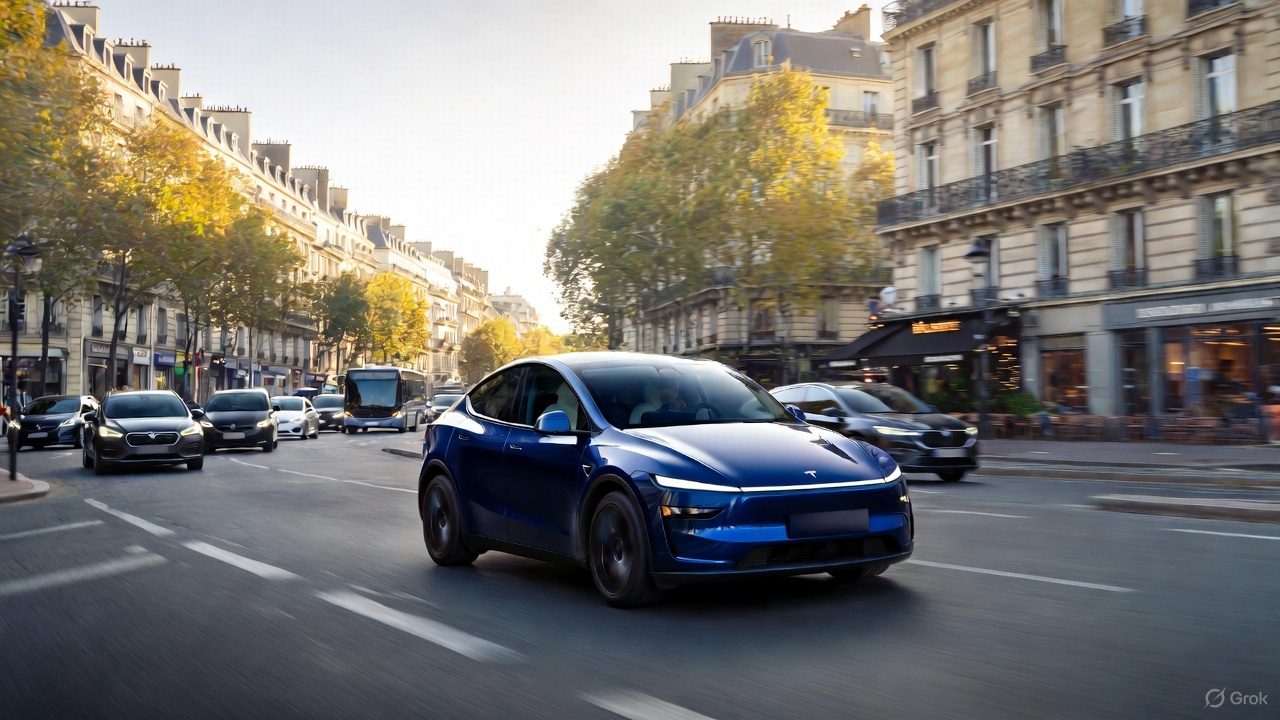
Tesla’s upcoming FSD Supervised system, set for a European debut pending regulatory approval, is showing notably refined behavior in real-world testing, including construction zones, pedestrian detection, and lane changes, as per a recent demonstration ride in Berlin.
While the system still required driver oversight, its smooth braking, steering, and decision-making illustrated how far Tesla’s driver-assistance technology has advanced ahead of a potential 2026 rollout.
FSD’s maturity in dense city driving
During the Berlin test ride with Auto Bild, Germany’s largest automotive publication, a Tesla Model 3 running FSD handled complex traffic with minimal intervention, autonomously managing braking, acceleration, steering, and overtaking up to 140 km/h. It recognized construction zones, braked early for pedestrians, and yielded politely on narrow streets.
Only one manual override was required when the system misread a converted one-way route, an example, Tesla stated, of the continuous learning baked into its vision-based architecture.
Robin Hornig of Auto Bild summed up his experience with FSD Supervised with a glowing review of the system. As per the reporter, FSD Supervised already exceeds humans with its all-around vision. “Tesla FSD Supervised sees more than I do. It doesn’t get distracted and never gets tired. I like to think I’m a good driver, but I can’t match this system’s all-around vision. It’s at its best when both work together: my experience and the Tesla’s constant attention,” the journalist wrote.
Tesla FSD in Europe
FSD Supervised is still a driver-assistance system rather than autonomous driving. Still, Auto Bild noted that Tesla’s 360-degree camera suite, constant monitoring, and high computing power mark a sizable leap from earlier iterations. Already active in the U.S., China, and several other regions, the system is currently navigating Europe’s approval pipeline. Tesla has applied for an exemption in the Netherlands, aiming to launch the feature through a free software update as early as February 2026.
What Tesla demonstrated in Berlin mirrors capabilities already common in China and the U.S., where rival automakers have rolled out hands-free or city-navigation systems. Europe, however, remains behind due to a stricter certification environment, though Tesla is currently hard at work pushing for FSD Supervised’s approval in several countries in the region.








